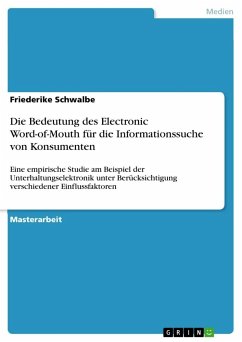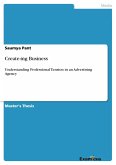Master's Thesis from the year 2014 in the subject Communications - Public Relations, Advertising, Marketing, Social Media, University of South Carolina, course: Word-of-mouth, language: English, abstract: Word-of -mouth (WOM) communication is ubiquitous. Consumers discuss favorite restaurants, where to buy a car and complain when a brand's customer service falls flat. These conversations, both positive and negative, have an impact on consumer behavior. In fact, WOM conversations generate more than 3.3 billion brand impressions each day (Keller & Libai, 2009). WOM has been shown to increase movie sales (Liu, 2006), the adoption of social platforms (Trusov, Bucklin and Pauwels, 2009) and the success of television programs (Godes and Mayzlin, 2004). While much of the current literature focuses on the consequences and behavioral mechanisms of WOM, little research has explored why people share their experiences with products or services (Berger, 2013). The purpose of this study was to gain an understanding of what consumers are posting on Facebook as it pertains to the performance of eWOM. To do so, the researcher performed a systematic content analysis based on Braun and Clarke's (2006) thematic approach to content analysis. The researcher found that eWOM was most often performed as positive product affect, as a self-presentation strategy and to express brand loyalty or belonging to a brand community.








